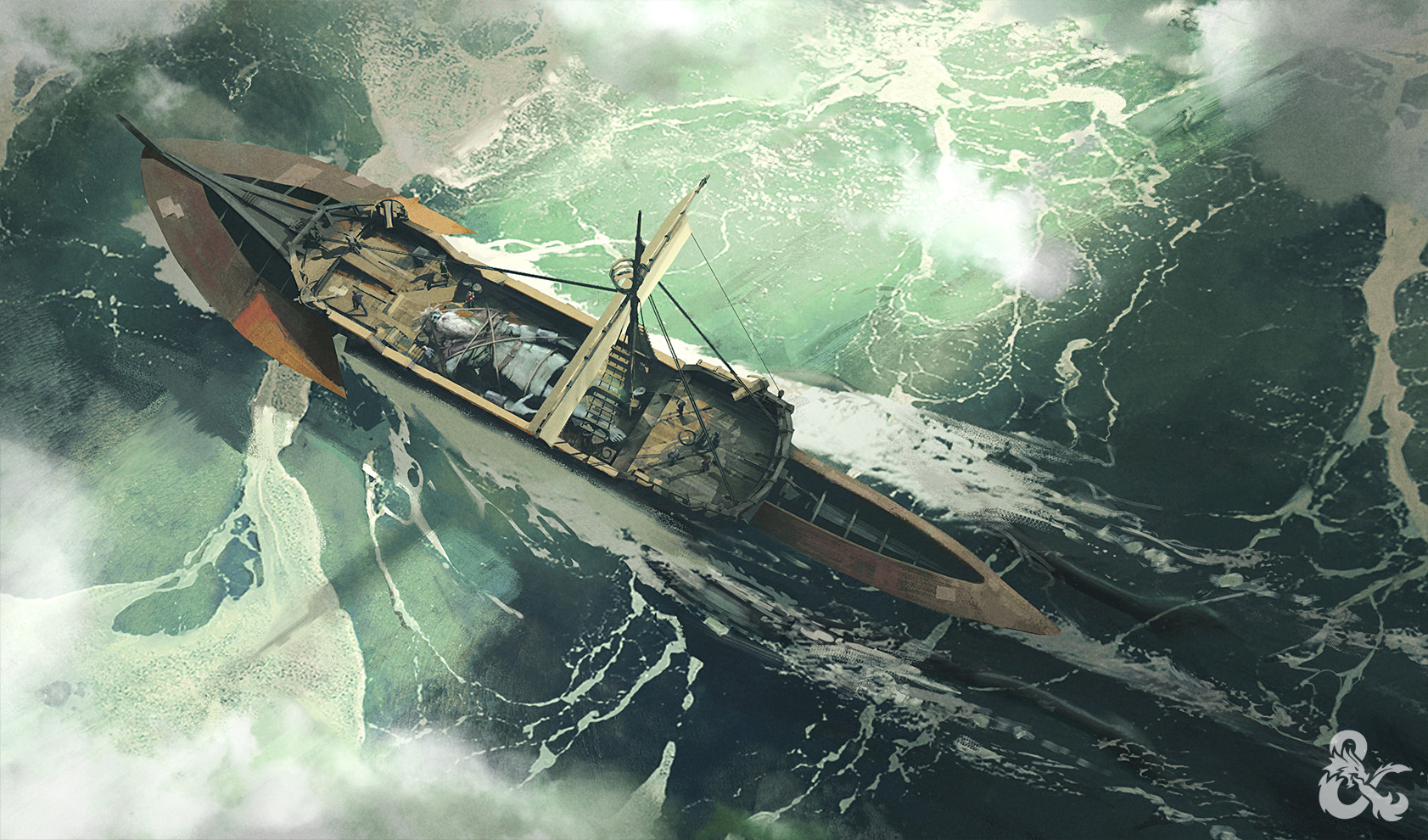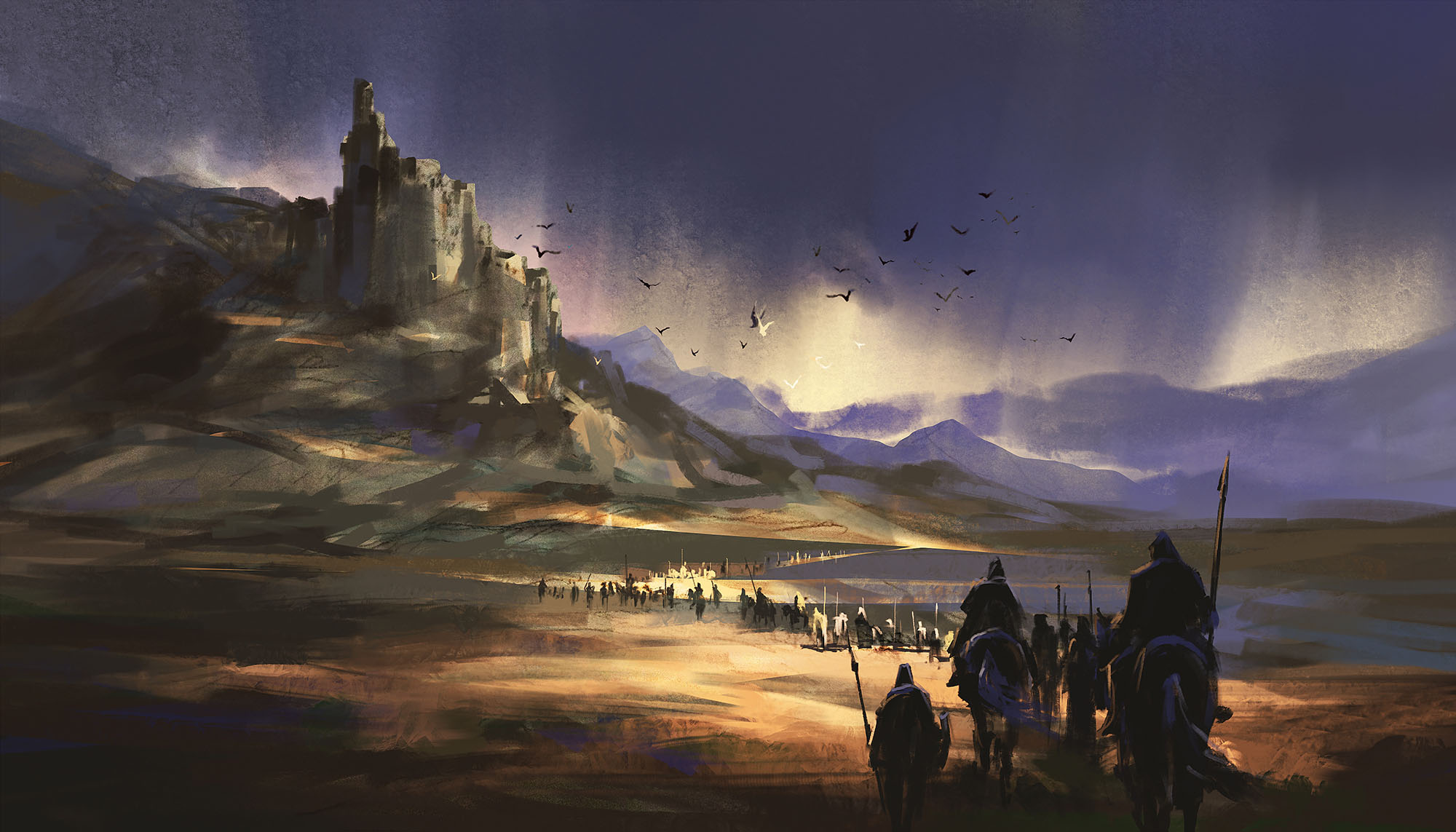ANALYZING THE REVELATION LISTS
With the published revelation list from Part 2 in hand, we can use it to quickly assess weak points in the campaign. And there are obviously some things that immediately jump out at us.
First, though, I should say that I was somewhat surprised by how robust this revelation list appears to be. You can see that a lot of these revelations are flush with clues. Certainly more than I had initially thought when simply reading through the campaign book.
However, the word “appears” is somewhat key here.
The thing to note is the lack of variety in the clues. Notice how many of them are some form of Question a Giant. This creates two problems.
First, a lack of variety in your clues can result in a flat and uninteresting investigation. You can see how the primary experience of this campaign could easily boil down to, “Talk to a giant. Talk to another giant. Talk to another giant. Talk to another giant. Talk to another giant.”
Second, and more importantly, this uniformity is a hidden form of fragility. The Three Clue Rule states that for any conclusion you want the PCs to make, you need to include at least three clues. And, technically, talking to a giant in Bryn Shander, talking to a giant in Helm’s Hold, and talking to a giant in Port Llast are three different clues.
But the function of the Three Clue Rule, ultimately, boils down to redundancy. Because these clues are all identical in form (you have to question a giant), they can all fail in the exact same way (the players don’t question a giant). Maybe the players never even consider the possibility of questioning a giant. Or maybe one of the PCs is a dwarf who has sworn an oath of vengeance on giant-kind (a reasonable character concept for a campaign pitched as “take the fight to the giants’ doorsteps!”) and will never take a giant prisoner. There are lots of possibilities, just as there are for missing any clue. The point is that the number of clues in these cases may only offer an illusory robustness.
We can see the effect here clearly, I think, if we look at the Phase 5 revelation lists after removing all forms of Questioning a Giant:
PHASE 5 – DEN OF THE HILL GIANTS
- Eye of the All-Father, p. 151. Oracle gives them directions.
PHASE 5 – CANYON OF THE STONE GIANTS
- Eye of the All-Father, p. 151. Oracle gives them directions.
- Silixia (Grayvale), p. 88. This young brass dragon will point the PCs towards Deadstone Cleft.
PHASE 5 – BERG OF THE FROST GIANTS
- Eye of the All-Father, p. 151. Oracle gives them directions.
PHASE 5 – FORGE OF THE FIRE GIANTS
- Eye of the All-Father, p. 151. Oracle gives them directions.
- Track Triboar Raiders (Triboar) p. 60.
- King’s Request (Citadel Adbar), p. 78. King Harnoth asks the PCs to raid Ironslag.
- King and Queen’s Request (Citadel Felbarr), p. 79. King Morinn and Queen Tithmel ask the PCs to raid Ironslag.
- Questioning Drow Raiders (Gauntlgrym), p. 85-86. Drow thieves from Ironslag can be caught in Gauntlgrym.
PHASE 5 – CASTLE OF THE CLOUD GIANTS
- Eye of the All-Father, p. 151. Oracle gives them directions.
- Random Encounter, p. 69. The PCs see Lyn Armaal flying above them.
In a single glance we can immediately see that only the Forge of the Fire Giants remains robustly supported by the Three Clue Rule, and the fragile funnel through the Eye of the All-Father is also obvious.
ANALYSIS: THE ENDING
Looking at the full revelation list, the other thing that’s obvious is that the end of the adventure doesn’t work.
The clear intention is that the PCs are supposed to unveil the conspiracy between Iymrith, Mirran, and Nym. But, as far as I can tell, there’s really no way for them to discover that conspiracy (other than blindly asking the oracle).
Furthermore, the final sequence of the campaign — making an alliance with Serissa, tracking down the Morkoth, rescuing Lord Hekaton, and then raiding Iymrith’s lair — is strung together by only the thinnest of threads. It’s easily broken, literally leaving the campaign at loose ends.
This is all exacerbated by another problem with the ending, one which is not specifically revealed by the revelation list: The central goal of the campaign is “stop the giant attacks.” The rescue of Lord Hekaton and the death of Iymrith is explicitly presented — structurally, textually, and diegetically to the characters — as the way to achieve this.
But… it doesn’t.
The root cause of the giant attacks is that the Ordning was broken. That happened before Hekaton was kidnapped and has nothing to do with the woes of the Storm King’s court or the machinations of Iymrith. So… yeah. Logically, there’s no reason that saving Hekaton or killing Iymrith would resolve that problem.
This is basically confirmed by the “Adventure Conclusion” section on page 230 of Storm King’s Thunder, which more-or-less says, “We ran out of pages. There is no conclusion.”
The first problem, obviously, is that the adventure doesn’t have an ending.
The second problem, though, is that it’s obvious from the beginning that saving Hekaton won’t logically solve the problem the PCs are trying to solve. This makes it incredibly difficult (bordering on the impossible) to motivate the PCs to do any of that. This plays a large role in why the end of the adventure is so tattered. It’s really difficult to design clues pointing to a conclusion when the conclusion doesn’t make any sense.
REVISING THE REVELATION LISTS
To fix these problems, we just need to revise the revelation list — fleshing it out with additional clues that will make the scenario more robust.
Before we do that, however, there are two big questions we should answer.
First, do we want to maintain the funnel through the Eye of the All-Father?
My personal predilection is to say no.
The structure doesn’t really make a lot of sense in terms of the game world. These giant raids are happening all over the place and are kind of a big deal. (If you’ll pardon the pun.) It doesn’t really seem logical that the PCs are supposed to seek out a hidden temple in order to figure out anything substantive about why the raids are happening or where the threat is coming from.
The structure is not particularly interesting in its own right. In fact, almost the opposite is true. In Phase 3 of the campaign the PCs are motivated to go traveling through the Savage Frontier, scooping up a variety of leads as they go that motivate further travel. But because, with one esoteric exception, the campaign is designed to funnel the PCs through Harshnag (who shows up as a “random” encounter on p. 118) to the Eye of the All-Father, none of these leads actually go anywhere. As a result, the campaign kind of just spins its wheels.
You can certainly improve this by including more clues leading to the Eye of the All-Father, but (a) such clues are easier to justify seeding into the giant lairs and (b) it’s probably more effective to ditch the funnel, let the PCs investigate the various giant factions independently, and then include the Eye of the All-Father as an additional (and very powerful) resource in continuing those investigations.
Second, how do we fix the fundamental problems with the ending?
There’s really two parts to this. First, the structure of the mini-arc around the Storm King’s court (identifying the Iymrith conspiracy, tracking down the Morkoth, rescuing Lord Hekaton, raiding Iymrith’s lair) needs to be made more robust in its own right, with a fully functional revelation list that adheres to the Three Clue Rule.
Second, there’s the more fundamental problem of the campaign not actually providing a conclusion that ends the giant violence.
The easiest solution to this problem would be to revise the premise of the campaign to match its actual structure. As written, Storm King’s Thunder ends when Lord Hekaton is returned to his throne and vengeance has been taken on the conspirators who betrayed him. If we want this to be our conclusion, then we simply need to set things up so that this outcome does, in fact, end the violence.
In other words, the giant attacks are caused by Lord Hekaton’s disappearance, so that his return logically brings them to an end. And we can do this by either (a) having the All-Father break the Ordning due to Hekaton’s disappearance or (b) skipping the whole concept of the Ordning and just having the giants out of control because Hekaton’s court is in disarray and no longer able to control them.
As noted, this is easily done. (It’s at least 99% accomplished by just remembering that the Ordning was now broken when Hekaton disappeared and having the various giant factions report things accordingly.) I think the drawback, however, is that “the king is dead, so everything is chaos” is just metaphysically much less interesting than the deeper and more profound upending of the giants’ social order by the All-Father.
The other option, therefore, is to re-align the ending so that it syncs up with the existing lore. Broadly speaking, I see two possibilities here:
- The PCs systematically eliminate every giant threat; or
- The PCs help one of the giant factions achieve victory in the new Ordning, ending the conflict.
The first approach can be crudely achieved by going from one giant lair to the next and stabbing giants in the face until there are no more giants, but I think there are both aesthetic and practical problems with this. The short version is that it’s difficult to really take the giant threat seriously if it can be trivially solved by five people acting alone.
This is something a lot of narratives — particularly “chosen one” narratives — get wrong. To understand why, consider two examples that get it right: Star Wars and The Lord of the Rings. Luke, Han, Leia, Chewbacca, and the droids can all be absolutely essential to the rebel victory, but if the Death Star was just blown up by the Millennium Falcon flying solo (pun intended), the stakes would immediately collapse. The same would be true if there were no armies in Middle Earth and Frodo and Sam could just walk up to Mt. Doom unaided and defeat Sauron. In both cases, the heroes are larger than life because they are the essential lynchpins in a much larger effort.
The final conclusion from all this, ultimately, is that the PCs will need to (a) figure out how they want to solve the problem and (b) start forming alliance(s) to make that happen. The good news is that, whatever course they decide to chart for themselves, we’ll probably be able to handle it through a common structure.
We’ll come back to that. Let’s start by revising the revelation lists leading up to that conclusion.
Throughout these revised revelation lists, I will be providing a description of how the lead should be integrated into the campaign. You may still need to figure out exactly how to do the final implementation, and I do recommend incorporating these clues into your prep notes for a location/scenario so that they don’t need to be cross-referenced from the revelation list.
















